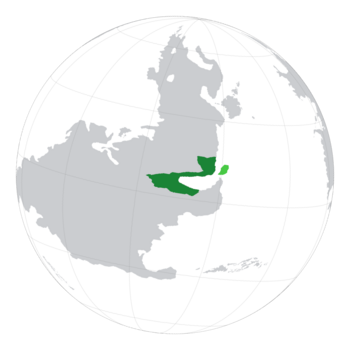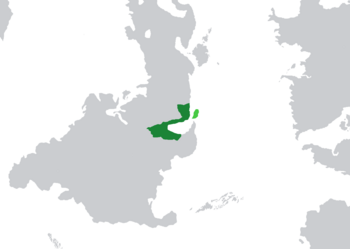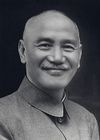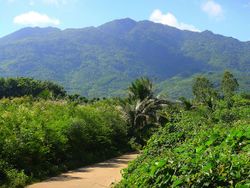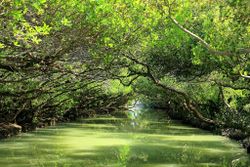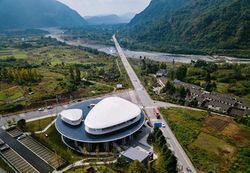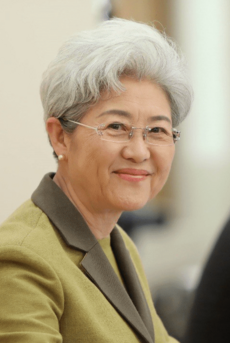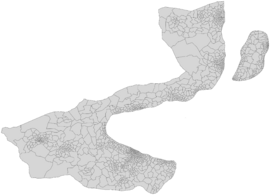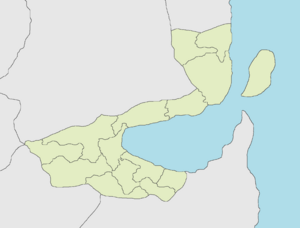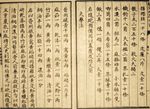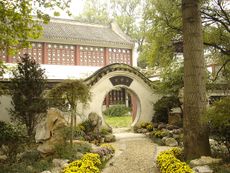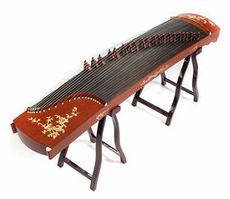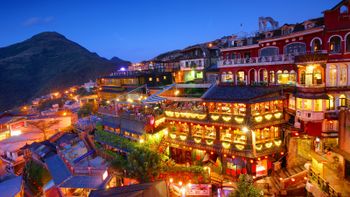Monsilva
Monsilvan Republic | |
|---|---|
Motto: 见义不为、无勇也 "Cowardice is to see the right and not do it" | |
Territory controlled by Monsilva shown in green | |
| Capital and largest city | Amking |
| Official languages | Monsilvan |
| Recognised regional languages | |
| Ethnic groups (2024) | |
| Religion (2024) | |
| Demonym(s) | Monsilvan |
| Government | Federal parliamentary republic |
| Chiu Zan | |
| Lin Yao-tang | |
| Legislature | Parliament |
| Senate | |
| Legislative Assembly | |
| Formation | |
• Establishment of the Xia dynasty | c. 820 BCE |
| October 1201 | |
| January 1568 | |
• Exit from the Empire of Baltanla[2] | 1 January 1730 |
| 26 August 1830 | |
| 25 December 1978 | |
| Population | |
• 2024 census | |
| GDP (nominal) | 2024 estimate |
• Total | |
• Per capita | |
| Gini (2018) | medium |
| HDI (2019) | very high |
| Currency | Monsilvan Yupian 玉片 (¥ or 玉) (MSY) |
| Time zone | AMT+12 (Monsilvan Western Time, MWT) AMT+13 (Monsilvan Eastern Time, MET) |
| Date format | YYYY-MM-DD |
| Driving side | left |
| Calling code | +45 |
| Internet TLD | .ms |
Monsilva (Monsilvan: 山国; pinyin: Shānguó), officially the Monsilvan Republic, is a country in central Ostlandet, with Baltanla to the west, the Kivu Ocean to the east, Akvarelusus to the north and Byasa and Zloveshchiy to the south. The territory of Monsilva is split up into 15 states. The nation consists of mountain ranges dominating the western side of the country, whereas plains and coastal areas dominate the east, where its highly urbanised population is concentrated. The capital, Amking, forms along the southern part of the Monsilvan coast. Other major cities include Luhai, San Kong, Maojie, Menchi, and Shangrao. Monsilva has just over 58 million inhabitants.
The lands of Monsilva have been settled for at least 20,000 years. Ancestors of Monsilvan ethnic peoples settled there around 6,000 years ago. In the 13th century, the multiple kingdoms with similar ethnic backgrounds united together into the first united Monsilvan dynasty. In 1568, the Zhou dynasty was formally annexed by the Empire of Baltanla and remained a part of the empire until 1730 after a referendum. Two years later, the Kingdom of Great Shan was formally declared in 1732 and became a well-known name among merchants and traders from many nations for Monsilva's many spice and plant-based exports. In the 1820s, the Kingdom of Great Shan was overthrown in a civil war and the Kingdom of Monsilva was declared in its place. The kingdom however, suffered from much corruption in its early days and although it was a constitutional monarchy, its democratic system was inefficient and accurately represented only a very small minority of the population.
After the Monsilvan political reform movement in the 1910s, the Kingdom of Monsilva's political rights began improving and so did its economy. The country was lead by the predecessor to the Reformed National Party, known as the National Party back then, from 1913 to 1953. This was the kingdom's most prosperous period, and the party managed to retain power for 40 years, even during the Monsilvan civil rights movement in the late 1920s and early 30s. However, after the death of the Qing Emperor, Monsilva's political stability was hit hard, and corruption infected the government once more. In 1953, the Leaders of Parliament Party took power. Many of the National Party's progressive policies were reversed, and in 1963, after the assassination of Liang Huiqing, Shao Yaoting took power and established martial law, which allowed to military to take over from the police force and elections were rigged massively in favour of the incumbent government. In 1972, after struggling through martial law for almost ten years, riots and protests began to erupt in different parts of Monsilva. By February 1978 the protests reached levels where rioters had weapons and were actively fighting against the military police. In June in the capital Amking, a massive demonstration took place which was met with a violent response from the police which resulted in hundreds of deaths. In October of 1978, the entire Monsilvan government including Emperor Wang were arrested, ending 2800 years of monarchy in Monsilva. On 25 December 1978, the Monsilvan Republic was established by Xu Zhou-da, the leader of the Monsilvan Revolutionary Army, the main orchestrator of the riots.
During the period from 1978 to present, Monsilva underwent many changes politically, economically, militarily, technologically and culturally. Monsilva experienced what is locally known as the "Monsilvan Miracle" during the period from 1978 to 1992. The 'miracle' included; the democratic development of Monsilva from a troubled constitutional monarchy into a parliamentary democracy; almost quadrupling its economy and lowering wealth inequality by 500% and massively improving its civil rights. Since 1978, Monsilva has been known as the Monsilvan Republic and has developed its foreign relations and opened its borders to more tourists from across Ostlandet and Terraconserva. In recent years, Monsilva is known internationally for its strict but highly regarded education system, its unique culture and as a top tourism spot with awe-inspiring geography and architecture.
The Monsilvan Republic is a member of the Ostlandet Union, ROKO, and the TCN. Monsilva has positive relations with many countries and has been observed to take more pragmatic stances on international politics. However, as of 2023, it maintains a territorial dispute with Zloveshchiy over Shaoyu Island, was admitted as a state in 2024 and was under an OU mandate from September 2023 to February 2024 after an OU military intervention. During the later years of the Kingdom of Monsilva, the country's international relations had suffered, however after the establishment of the Monsilvan Republic, it was given a fresh start to establish stronger political and economic connections with other nations. In the 1990s, Monsilva co-founded ROKO alongside Kivu, Gjorka, New Gandor and Paleocacher. Thanks to this alliance, Monsilva has been able to establish strong economic and political relations with its member nations. In 2022, Monsilva was a founding member of the Ostlandet Union, through which it has developed stronger relations with its fellow nations on Ostlandet, particularly in the lead up to the OU military intervention in Shaoyu. As of February 2023, Monsilva's export-oriented economy is Terraconserva's 11th largest by nominal gross domestic product (GDP); it has a very high human development index; and has a score of 8.68 in the Global Democracy Index, defining it as a full democracy. Monsilva also performs highly in education, healthcare and life-expectancy.
Contents
Etymology
Before the 1830 Treaty of Luhai, Monsilva was not in common use and was not the official name of the nation. Instead was referred to as the Kingdom of Great Shan. The name 'Shan' comes from the Monsilvan shān meaning 'mountain'. The first pictograms of the Shān character appeared as a crown, so this, alongside the word 'Great' were used to refer to the importance of the Monsilvan monarchy.
After the Monsilvan Civil War, the Kingdom of Great Shan became the Kingdom of Monsilva. The name Monsilva is partly the iberic version of the Monsilvan name for the nation, 山國 (Shānguó), where 山 (Shān) means mountain and 國 (guó) means country. So the literal translation would be Mountain Country. However, when presenting the name of Monsilva to foreign merchants and diplomats from nations which spoke languages that were far too different to Monsilvan, officials of the Monsilvan government at the time tried to give them a name for the nation in a language which they believed the foreign visitors spoke. Unfortunately, due to the Kingdom of Great Shan's minimal international relations, the officials gave the name Mons Silva which is Romanyan iberic for 'Mountain Forest'. The name spread among visitors who came to Monsilva and over time, although the government eventually realised how dated the name they gave was, it stuck.
History
Settlement and early dynasties (to 1201)
Monsilva as it is known today has been inhabited by humans for over 20,000 years. Although it has been inhabited for so long, no obvious civilizations formed until the late 11th century BCE, where there is archeological evidence of civilization forming near the coastal regions of Monsilva. The earliest evidence of a kingdom within Monsilva's modern borders is from the 9th century BCE. There are multiple pots and vases that's pieces have been uncovered by archeological work done throughout the country.
According to Monsilvan tradition, the first confirmed dynasty that had a structure similar to later Monsilvan dynasties was the Xia (夏), which emerged around 820 BCE. The Xia dynasty marked the beginning of Monsilva's political system based on dynasties, which lasted for another 2800 years. The Xia dynasty was considered mythical by historians until scientific excavations found historical sites in 1922. The Xia dynasty was said to have been named after its first emperor, Xia Emperor, who is also considered Monsilva's first emperor. Not long after the Xia, came the Xin and Ma dynasties located in central Monsilva and the Qin dynasty, located in northern Monsilva. The Qin dynasty is the longest surviving dynasty in Monsilvan dynastic history, lasting 708 years from 792 BCE to 84 BCE.
Over the course of the 1600 years of Monsilva's dynastic history, many dynasties rose and fell thanks to uprisings, war and death. Notable dynasties in Monsilva include the Han dynasty, which emerged in 60 CE as the first buddhist dynasty. The dynasty famously allied with the Later Qin dynasty (also known as the Yuwen dynasty) in the 7th century CE to conquer the Tang dynasty, a successor to the Ma dynasty. In this period, the largest dynasty by power was the Shang dynasty, which formed out of the collapse of the Feng dynasty in 618 CE. The Shang was lead by a relative to the Han and Qin imperial families, which created a strong alliance between the three dynasties.
In 844 CE, the Shang dynasty conquered most of the Yuan dynasty after a grueling war. With this, the last dynasty controlled by an unrelated family to the others' was gone. This is what begun the transition towards the unification of the Monsilvan Kingdoms in 1201 CE, whereby all four dynasties left united to form the Zhou dynasty under the Zhou Emperor.
Later dynasties (1201–1568)
In 1201, the dynasties that made up the lands that are now Monsilva, joined together as one dynasty. This was thanks to the heir of two of the four dynasties being the same person, and a lot of blackmail. One of the emperors of these dynasties fortunately kept record of all the attempts of blackmail on him. This has fortunately allowed them to be rediscovered by archaeologists in the 1980s which has helped us understand truly how all four dynasties decided to unite at once.
Emperor Zhou, the first emperor of the dynasty named after him, ruled for 67 years, the second longest reigning monarch in Monsilvan recorded history after the Song Emperor. During his reign, Monsilva underwent many cultural developments and lead to the creation of a unified Monilvan folk religion.
For the majority of the Zhou dynasty's existence, it was a prosperous and growing economy. Although it was an absolute monarchy with the emperor making all decisions, political ignorance in the dynasty helped minimise uprisings or revolts against the emperor and his government. The dynasty also saw the first de-jure Monsilvan empress. Towards the end of the 15th century, the relationship between the emperor and his people began to deteriorate massively, especially due to his lack of control over merchants who would monopolise products making them far too expensive for most Monsilvans. Despite multiple attempts from the Zhou government, they failed to get rid of the merchants and the economy suffered greatly thanks to this. With the large Empire of Baltanla being right nextdoor to the Zhou dynasty, it was inevitable that the empire would want to annex the dynasty in order to acquire a coastline along the Kivu Ocean. In 1567, the Empire of Baltanla did exactly as expected, and offered to annex the Zhou dynasty. With little to no alternative decisions to make, the emperor of the Zhou dynasty voluntarily ceded the Zhou dynasty to the Empire of Baltanla in 1568.
Empire of Baltanla (1568–1730)
Under the empire, Monsilvan people faced some difficulty adapting to a new government that has a contrasting way of life. However, historical discoveries show that Monsilvan ethnic peoples were being found in mid to high ranking positions within the Baltanlan Empire by the 1590s. During the Empire of Baltanla, Monsilva began to redevelop its industries thanks to the strong administration of the empire. Monsilva's coastline was very important to the empire, as it gave it access to the Kivu Ocean, which Baltanla had never had access to before.
Monsilva's vital position for the empire developed the industries of Monsilva into what can still be seen today in the modern nation. The northern areas of the country, where Luhai City is now, was a major sea-trade region and was vital for the empire's trade across the Kivu Ocean. The southern region where Amking and Shangrao are became home to businesses and manufacturing industries, which are still prevalent today. Meanwhile, inland Monsilva remained a place for culture, with traditional clothing and items being manufactured as well as the construction of religious monuments such as temples.
In the early 18th century, the Empire of Baltanla's economy was slowing down, and the country was struggling to administer its territory. By the 1720s, Monsilvan people across the empire were demanding to become independent. In order to prevent internal conflict, the Baltanese imperial government issued a referendum to the Monsilvan people asking if they would like to depart from the empire. The Monsilvan people voted for yes, and the next year, the original Zhou dynasty was recreated as the Provisional Zhou government and two years later formed the Kingdom of Great Shan.
Great Shan (1730–1830)
In 1732, with the Kingdom of Great Shan being formed two years after a successful referendum to exit the Empire of Baltanla, they wanted to be noticed on the world stage and try to develop its economy through international trade and diplomacy. The kingdom saw a massive increase in quality of education, healthcare and science thanks to a quickly developing economy which was due to increased trade of native medicinal resources and food out of the Shan in exchange for amenities to build up cities and monuments.
Although the Great Shan had many economic improvements, it did not meet the expectations many people living in the country had, especially after leaving an authoritarian empire. Many people expected the Great Shan to transition from absolute monarchy to a constitutional monarchy, with some even advocating for democracy. However, over the state's 100 years of existence, it never became democratic. Although the monarch was no longer in absolute power as he had to consult an deliberative council, the system was highly corrupt as council members were appointed by the monarch anyway so it was unlikely for members to disagree with a monarch's decision.
The last monarch of the Kingdom of Great Shan was the Xuantong Emperor. Xuantong was the most disliked emperor throughout the Kingdom's existence, as he had little care for the needs of his people and mostly gave immense benefits to Monsilvan nobility. The economic divide that was already torturing many of Great Shan's people became a chasm, almost completely exterminating the middle class, as nobility became increasingly rich, and the poor began even poorer. This along with the inability to change their leader is what lead to the Liberate Monsilva movement along with its thousands of volunteers to start an uprising against the government, starting the Monsilvan Civil War which lasted from 1824 until 1830.
Kingdom of Monsilva (1830–1978)
Out of the demise of the Kingdom of Great Shan came the Kingdom of Monsilva, the first use of Monsilva as the name for the country, rather than just its people. The Kingdom of Monsilva was established by Chai Lin, who is considered the founding father of the modern Monsilvan nation. He was also Monsilva's first democratically elected prime minister, and it's first non-monarch head of government. However, as a part of the Treaty of Luhai, the new nation was still a monarchy under the Song Emperor who was only 10 years old when he became emperor. Although support for the monarchy was low at its beginning, support grew over time as the emperor tried to advertise the monarchy as a representation of Monsilva's history and unity. The support for the monarchy peaked during the reign of the Qing Emperor who was well loved amongst most Monsilvans for his charity work, support of increased suffrage and political apathy and lack of involvement.
The Kingdom of Monsilva was officially democratic from start until end, but due to limited suffrage during its early period, it could hardly be considered incorrupt. For every election until the second 1913 general election, only Monsilvan males with approved tertiary education could vote. In the 1913 election, it was allowed for any Monsilvan male over 18 to vote, however women were not legally allowed to vote until the 1933 election. During the period from the 1933 election until the assassination of Liang Huiqing in 1962, the Kingdom of Monsilva was at its best, with all citizens over 18 able to vote, significant anti-corruption legislations and a rapidly growing economy.
In 1963, a year after the assassination of Liang Huiqing and the accession of Shao Yaoting to the role of prime minister, martial law was implemented in Monsilva. This was done with the support of the Wang Emperor, who was a nephew of the Qing Emperor, but was very disliked by the population as he was very lavish and wasteful with his money and many theories stating that he was blackmailing politicians did not help his reputation. These theories however, were found out to be true after many letters from the emperor blackmailing National Party politicians were found with dates not far from dates where these politicians were either mysteriously disappearing or spontaneously resigning.
During Monsilva's martial law period from 1963 until 1978, many of the country's democratic reforms were reversed, and although elections continued and suffrage officially remained the same, they were clearly rigged, with Shao's party often winning above 70% of the vote even after widespread protests just before elections. The martial rule meant that Monsilva's police force consisted of loyal military members and any opposition to the government resulted in arrest or public beatings from soldiers.
In 1972, protests begun building in scale across Monsilva. These first protests began what is now called the Monsilvan Revolution. However, the height of the riots and protests came six years later in 1978. These riots were lead by Xu Zhou-da of the Monsilvan Revolutionary Army. These riots were of such scale, that they led to a huge response from the Monsilvan military which resulted in the death of hundreds of people on both sides. The mass rioting and protests lasted almost without fail from February 1978 until October, when the Revolutionaries entered the Monsilvan parliament building and arrested Shao Yaoting, several of his cabinet ministers, including the head of the police and the emperor. The day after, the head of the police was forced to order the entire Monsilvan military to stand down. From then until December 25 1978, Xu Zhou-da, other senior members of the MRA, as well as the leader of both the FDP, Sying Niu, and the leader of the Liberal Party, Song He, established the Provisional government of Monsilva. The provisional government decided to abolish the monarch and establish a republic as a direct successor to the Kingdom of Monsilva.
Monsilvan Republic (1978–present)
After the signing of the Treaty of Amking, which abolished Monsilva's monarchy, Xu Zhou-da was declared the first president of Monsilva under the provisional government of Monsilva. The provisional council was officially dissolved in 1979 in replace of the Federal government of Monsilva (just called the 'Government of Monsilva' until 1983). The first general election was in 1980 and the first presidential election was in 1983. Xu was re-elected twice and served as president until 1994. During the early days of the republic, Monsilva experienced the "Monsilvan Miracle", which included the significant increase in the economy, HDI, population, political transparency as well as increased education, healthcare and technological standards.
The republic's first elected prime minister, Hsu Xue-zhou was prime minister from 1980 until 1992, one of Monsilva's longest serving prime ministers. Hsu made ambitious decisions relating to Monsilva's economy resulting in its unprecedented growth. He also began many infrastructure projects that solved Monsilva's serious housing crisis in the 1970s, and gave homes to many people and businesses. Politically, Hsu was responsible for setting up Monsilva's federal system, approving the creation of state governments and premiers.
Another one of Monsilva's longest serving prime ministers, Suen Shi-huang, lead Monsilva during the period just after the Monsilvan Miracle. His tenure from 1996-1999 and 2000-2012 is occasionally referred to as the 'Second Monsilvan Miracle' by many left-wing politicians. This is likely due to the many social reforms that were done during the time he was prime minister, such as the 2011 Anti-discrimination Act which made discrimination illegal across the country. A more conservative viewpoint of his tenure is likely more negative, as during his premiership, Monsilva's economy declined and its foreign policy became much more welcoming to immigration.
In 2016, Xu Yan returned the RNP to the premiership. He was seen as one of Monsilva's most charismatic prime ministers. However, in 2022, he received lots of negative comments from politicians and voters, including from within his own party after turning back on his own promises he made in 2020 that he would introduce an electoral reform bill. This lead to the opposition parties introducing the reform bills themselves. The two bills were passed by a large margin, and resulted in him losing the 2023 federal election which had been called a year early due to the legislations.
Since June 2023, Lin Yao-tang has been serving as the Prime Minister of Monsilva. He lead the country through the OU military intervention in Akvatika which lasted just over a month and resulted in the later admission of the island of Shaoyu into Monsilva as its fifteenth state.
Geography
Monsilva is located on the eastern side of Central Ostlandet. The country's borders are defined by its sloping physical geography, with its eastern border defined by the Kivu Ocean, and its western border defined by mountain ranges. The coastal states of Monsilva consist mostly of fertile lowlands, foothills and forests and hold the vast majority of Monsilva's agricultural output and human population. The western and inland regions of Monsilva consist of fewer people due to its hilly and mountainous terrain. The inland south-east of Monsilva is where the country's only sub-tropical rainforests are located, such as the Minxiong South National Park. Monsilva's subtropical climate prevents it from having any deserts, however artificial desertification, specifically in Nanyan, has created artifical desert-like environments.
Traditionally, the Monsilvan population has been focused on the country's coast, which is partly the reason behind Monsilva's thin and densely-populated nature. This has been due to the highly arable land located on the coast which kickstarted Monsilva's still growing agricultural industry. However, the country's mountains are still a large part of its culture, with Monsilvan emperors, starting from the Zhou dynasty, choosing to be located among the mountains in places such as Sanzhong. Amking, the capital and largest city in Monsilva, which holds around a fifth of the Monsilvan population, has Monsilva's most habitable land, and has been the center for Monsilva's population for centuries due to its agricultural potential and ability to be used as an economic centre and trading hub.
The Monsilvan Republic has a land area of approximately 964,027 km2 (372,213 sq mi), which would place it 37th in Terraconserva.
Regions
West Monsilva
Western Monsilva consists of Monsilva's tallest mountains, including its tallest, Mount Yushan. The mountains of Western Monsilva are divided into three mountain ranges: the Weishi Mountain Range, the Han Mountain Range and the Shannan Mountain Range. Although all three ranges are generally similar, they have unique features that allow them to be identified individually from each other. Western Monsilva is mostly uninhabited, with the largest settlements barely surpassing classification as villages. The terrain being difficult to navigate results in people going missing or being injured while attempting to navigate. It is also difficult to maintain, with occasionally dangerous plants and animals coming close to man-made trails and settlements.
The Meihua and Chahe Valleys are large flat areas lying between the Nanhua, Chungfen, Shannan and Han mountain ranges. It lies within the states of Wuzhong, Xishanjia, Weishi and Nanyan. It is predominantly filled with agricultural land growing products like wheat, rice, coffee, fruits, and many more food products. As well as this, it has plenty of pastures filled with animals such as cattle, chickens, pigs and sheep. Other than agricultural land, the valleys do have some significant settlements, the largest of which being Wodai, but others include Sanzhong, Taimali, Dali, Shuangliao, Lancheng, Ren'ai, Qidong, Wufeng and Lu'an. Notable geographic features within the valleys include rice terraces, such as the Ren'ai Rice Terraces and waterfalls, such as the Guangxi Waterfall.
South Monsilva
Central Nanyan is infamously characterised by historic deforestation and mining which has damaged the environment. However, this environment has been improving over the last decade due to recovery efforts initiated by the Monsilvan government in the early 2000s. Originally, the region was dominated by sub-tropical rainforest, grasslands and savannah. Further north, the Beihua Mountains, which mark the border between the states of Amking and Huachang, and the Nanhua Mountains, which mark the border between Huachang, Xishanjia and Nanyan are characterized by its location surrounded by mountains. The Meihua River flows through the center of the region and provides the region with a source for its agriculture.
Meanwhile, Zaixian and East Nanyan are categorized by their almost tropical environment, including rainforests and wetlands. They are home to the Xikou and Minxiong South national parks. Xikou is one of Monsilva's largest national parks, consisting of almost the entirety of Zaixian's rainforests. The region is the warmest in Monsilva, with temperatures frequently reaching above 40 degrees celcius. It is also the closest part of Monsilva to the equator. The largest settlements in the region are Baoan and Yilan, the capitals of Zaixian and Nanyan respectively.
East Monsilva
In south-east it is bounded by the Bay of Monsilva and the hills and forests of southern Donguan and Zaixian, while further north it is defined by the Shuangfang Mountains of central Bazhong. The topography of the Southern Coast is defined by fertile lowlands and plains that are in proximity to the coast. It is also the most populated region of Monsilva, with settlements including the capital of Monsilva, Amking, as well as major cities such as Shangrao, Waiping and Chishang.
The Xitian Valley, which lies between the Shuangfang, Chungfen and Nantou mountain ranges, is named after the River Xitian which originates from Lake Xitian located in north-west Bazhong. The valley is famous for its small villages that scatter the grasslands and forests that lie within it. However, larger settlements such as Yuchi, Guobei and Wuden also sit within the valley, but are all found around Lin Sun Lake in Weishi, the largest lake in Monsilva.
The Shuangfang Mountains, north-east Weishi, and the Xiaogu Panhandle are defined by its hilly and mountainous terrain, with the flattest part of the region being the Lunhuang Valley, in which the largest settlement, also named Lunhuang, is located. The Lunhuang Valley, despite being flatter than the rest of the region, is still well above sea level. It was created from erosion from the Gaoping River, one of the many rivers that flows into the Zhongdao River, which also flows through the valley.
North Monsilva
The Xiaoguan Stretch, a portmanteau of Xiaogu and Maguan, the two states that make up the region, consists of grasslands similar to those found on the southern coast of Monsilva. As a coastal region, it hosts a large portion of the Monsilvan population and is also responsible for most of Monsilva's animal products industry, with many pastures dedicated to cattle, sheep and pigs being located within the region. Plenty of major rivers flow into the Bay of Monsilva via the Xiaoguan Stretch, including the Zhongdao, Tamsui, Puzi and Tao Rivers. The Huanglong River, Monsilva's widest river, also flows into the bay through Maojie, the largest city in the region. The region is also more susceptible to earthquakes than anywhere else in the country, with the largest earthquake in Monsilva's recorded history being the 2011 Maojie earthquake which had a magnitude of 7.3 ML.
The Luhai and the Yingchan Delta region consists of almost all of Meixian east of the Meixian Mountains as well as the non-mountainous regions of Luhai. The region is dominated by low hills, fields and pastures, making up Monsilva's largest consistent region of arable land. It has been a vital part of Monsilva's agricultural industry for hundreds of years and control over the region was utilised during historical conflicts to weaken the government due to its importance. This characteristic has also lead to millions of people inhabiting the region, with Monsilva's second and third largest cities, Luhai and Menchi, both being located within the region. The Yingchan Delta, located in Menchi, has historically been susceptible to flash floods due to the flat, low lying islands that the delta consists of. However, the importance of lowering the impact of the flooding due to the large population in the area has lead to significant, and so far successful, anti-flooding measures being put in place across the region.
The Meixian and Gaobei mountains are famous for their sloping edges, with the tallest of these mountains, which are found in Leibo, being used for winter sports such as skiing and snowboarding. It is the only region in Monsilva to host a ski resort, the Daxueshan Ski Resort. However, despite the regions mountainous nature there are valleys in which settlements have developed, the largest of which is Haimao, the capital of Leibo.
Shaoyu Island hosts a similar climate to its nearest mainland state, Meixian, with coastal areas being arable and warm and the mountainous inland being less inhabitable and much cooler. The island is characterised by its ring of settlements on the coast surrounding the steep Shaoyu Mountains.
Rivers
Monsilva has thousands of rivers, including ones originating in and outside the country's borders. Monsilva's coastal nature has lead to it hosting a large portion of the mouths of many of central Ostlandet's rivers. The vast majority of rivers flow west to east, from the many mountain ranges on Monsilva's inland borders and into the Bay of Monsilva or the Kivu Ocean. The Meihua River, which rises in the Shannan Mountains of Xishanjia, flows through southern Monsilva and enters the Bay of Monsilva through the city of Amking. The Meihua is around 1,200 kilometres long, and is Monsilva's longest river. It is closely followed by the Cha River which flows through central Monsilva, rising in the Han Mountains of Wuzhong and flowing through the cities of Wodai, Sanzhong and Taimali before reaching Lin Sun Lake. Other long rivers in Monsilva include: the Chun River, which rises in the Gaobei Mountains and flows through Haimao into the state of Luhai, where it then flows through Tsingyi before making its way across the state to flow into the Kivu Ocean via Luhai City; the Tao River, which originates in the Meixian Mountains not far from the Giant Panda National Park and flows southwards towards the city of Taoyuan, which is where it flows into the Bay of Monsilva. The Tamsui and Puzi rivers both flow through Maguan, and although their Monsilvan sections are relatively short, they are much longer and originate in the country of Akvarelusus.
Climate
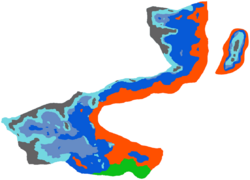
Although Monsilva is not one of the largest countries in Terraconserva, it hosts a somewhat diverse climate, ranging from tropical in the far south, to tundra in the mountains of the west and north. During the summer, the monsoon winds carry warm and moist air from the south and delivers the vast majority of annual precipitation throughout the country. However, during the winter, cooler airs originating from the North Kivu ocean bring comparatively cooler and drier conditions. Despite Monsilva's proximity to the equator, the geography of the country, particularly its position along the Bay of Monsilva, has given it complex climatic patterns.
The lowest temperatures recorded in Monsilva are found at the peaks of the Weishi, Han and Gaobei mountains, which can reach altitudes of almost 5 kilometres. These temperatures can dip to well below −5 °C (23 °F). In contrast, the warmest temperatures in Monsilva are found in its most tropical region, found in Zaixian, where temperatures can reach as high as 40 °C (104 °F). Precipitation is largely concentrated in the warmer months, with occasional monsoons, typhoons and tropical storms reaching Monsilva during the summer months.
Monsilva's mountains have a significant impact on Monsilva's weather, with mountains often preventing rain clouds that are passing over north and central Ostlandet from reaching most of Monsilva. This also works the other way around, with clouds that are approaching from the Kivu Ocean being stopped from passing southward beyond Monsilva due to the Shannan Mountains.
Environment
Air pollution, originating from Monsilva's large manufacturing industry, is a developing issue, along with water pollution from certain industrial areas of the country. Despite the prevalence of these issues, the impact they are having on Monsilva's environment is decreasing, likely due to the development of more eco-friendly company policies and stricter environmental laws being introduced by the government. However, some problems that have existed in the past, such as deforestation and desertification in Monsilva's south, has resulted in a large permanent loss in agricultural land in the region, as well as a long lasting economic impact.
Government and politics
Government
The first government under the name of Monsilva was founded on 26 August 1830 as the Kingdom of Monsilva at the end of the Monsilvan Civil War. It was a constitutional monarchy, but had no formally written constitution. The Kingdom of Monsilva lasted until 1978, after fourteen years of martial rule.
The government of the Monsilvan Republic was founded in 1978, with its constitution being written in 1983, which states that Monsilva "shall be a democratic nation ruled through strength and cooperation, but never with coercion and corruption". It underwent significant revisions throughout the 1980s which helped develop the constitution to its standard today. The constitution is never considered complete, which therefore allows all aspects of it to be altered at the discretion of parliament and the president. The government is a federal parliamentary republic, and the Parliament of Monsilva is sovereign. The parliament consists of the Legislative Assembly, the Senate, and the President of Monsilva.
The Legislative Assembly is lead by the Prime Minister of Monsilva, who is also the head of government. The Senate is mostly advisory and can only legally prevent the Legislative Assembly from passing a legislation if it has unanimous support from the house. However, when legislations are sent to the Senate, they can be sent back to the Legislative Assembly for re-discussion. After a legislation is accepted by the Senate, it reaches the president, who will formally pass the legislation at the request of the prime minister. The president does have the ability to reject passing a legislation, however it has not been done since President Guo Ming-chen rejected to pass a law prohibiting presidential veto in March 2000 with the support of a nationwide petition.
The head of state and commander-in-chief of the Monsilvan Armed Forces is the president, who is elected by popular vote for as many terms as they are successfully voted for on the same ticket as the vice-president. The president is a mostly figure-head position, as they are unable to make decisions without approval from the parliament, however, they are legally permitted to veto laws but this power is frowned upon.
For federal elections (elections to the Legislative Assembly), Monsilva uses its 510 legislative constituencies, each of which is represented by a single Member of the Legislative Assembly. Federal elections take place every four years, unless a snap election is called by the prime minister. The political party with the most seats in the Legislative Assembly after a federal election determines the next, or continuing, prime minister. If the party has a minority, but still the most, it is encouraged to form a coalition with one or multiple other parties in order to reach a majority. The Senate is elected in a similar manner every four years, and takes at the same time as a federal election, and since 2023 have been included as part of the same electoral process. For senate elections, one senator represents a certain district within a state. States can have between 2 and 17 districts to make a total of 85 senators.
The prime minister as the head of government of Monsilva, will form a new cabinet every time they are elected, including re-election. The Cabinet of Monsilva is selected by the prime minister under advice from their party. The cabinet is the most executive body in the Monsilvan government and is also the most powerful body. Internationally, the president will represent Monsilva, whilst the prime minister mostly deals in domestic affairs. However, any laws relating to international relations will always be suggested by the cabinet and not the president; the president can only advise to pass a law.
Technically, the president is the only person who is able to declare war on another nation as they are the commander-in-chief of the Monsilvan Armed Forces. However, constitutionally the president must discuss a declaration of war with the entire cabinet before they can formally declare it. The prime minister can only advise to declare war, and can never formally do it themselves. The government's system for declaring war is mostly uncertain as it has not been required since the writing of the original constitution in 1983.
Along with the primary federal government, each of Monsilva's states has its own government tasked with managing the state's individual affairs. Due to Monsilva's federal nature, each state is very autonomous and able to make many decisions individually from the federal government. However, all states, with the exception of Shaoyu, are unable to override any federal laws passed nationally. For example, should mandatory conscription be implemented nationwide, no states (except Shaoyu) are permitted to override it and cannot ban conscription in their state. Shaoyu's ability to override laws is due to its status as a 'free state' (自由州; zìyóu zhōu) granted when it was admitted as a state in 2024.
Constitution
The Federal constitution for the Monsilvan Republic was drafted in 1983 by the parliament of Monsilva just after the first democratic election in the new republic. It went into effect on 31 December 1983. The constitutional basis was to declare the importance of mainting democracy in Monsilva and preventing a revolution or coup. The first line of the constitution, of which the motto is derived from, is "Monsilva shall be a democratic nation ruled through strength and cooperation, but never by coercion or corruption." (山共和国将是一个通过实力和合作来统治的民主国家,但绝不会受到胁迫或腐败。).
The entire federal framework was also laid out in the constitution. In this, 10 states were defined as regions inside Monsilva that retained a limited amount of sovereignty over their territory and had individual parliaments and governments able to pass laws relating to their states only. The constitution also allows the admission and/or the creation of new states. This was last done in 1984 with the addition of Luhai, Wuzhong, Amking and Donguan, raising the number of states to 14.
The constitution also declared the president as the head of state and the prime minister as the head of government. As well as explicitly defining the powers of both heads and making it clear that the president can only advise the prime minister and is obligated to act on the advice of the prime minister as they would oath to when they are inaugurated. The borders and basic foreign policy of Monsilva was also defined in the constitution in the same section. The borders were defined as they are today and have been for since 1730. The constitution also defined Monsilva's basic foreign policy as simple non-interventionist. This meant, Monsilva would only intervene internationally if it felt obligated to based off international relations or it was in the best interest of the nation.
Foreign relations
Monsilva is a member of the Ostlandet Union and the Terraconserva Council of Nations. Monsilva has good relations with many countries across Terraconserva, with close relationships with nations such as Baltanla. Monsilva is recognized as a fairly popular tourist destination due to its unique culture, warm weather and tourist-friendly environment.
Monsilva is also a large trading nation and trades with nations all over Terraconserva and has developed international relations through exporting goods ranging from tech to medicinal products to agricultural goods such as tea, coffee and rice. Monsilva is also well known through international Monsilvan companies such as Fushao, Ltd. and Soong Heavy Industries, both manufacturing conglomerates; NJIDU Co., a technology company; Banpo Inc., a pharmaceutical and biotechnology company; as well as the Monsilvan-Reykani Chienkun Rúlla PLC, a vehicle manufacturing corporation.
Military
The Monsilvan Armed Forces consist of four professional service branches: the Navy; the Marines; the Army and the Air Force. The armed forces of Monsilva are managed by the Department of Defense, chaired by the Secretary of State for Defense. The Commander-in-Chief is the President of Monsilva, to whom members of the forces swear an oath of allegiance as well as the nation as a whole. The Armed Forces are charged with protecting Monsilva and its allies, as well as promoting Monsilva's peaceful stance on international relations.
The military are also used outside of wartime to assist in rescue operations and disaster relief within Monsilva. An example of this was the response of over one thousand members of the armed forces assisting in rescuing people stuck under rubble after the 2011 Maojie earthquake.
Administrative divisions
Monsilva consists of 15 individual states (Monsilvan: 州, Pinyin: zhōu). Each state holds governmental juristiction over a specific geographic territory of Monsilva where it shares sovereignty with the federal government. Federalism was an important aspect that was discussed by the provisional government when the Monsilvan Republic was being founded after the end of the mass protests in 1978. Historically, the tasks of local law enforcement, education, healthcare, and local transportation and infrastructure, have generally been considered primarily state responsibilities, although all of these now have significant federal funding and regulation as well. The constitution of Monsilva allows for frequent alterations which have changed the powers of states occasionally since it was written in 1983.
States are divided into counties and districts. Districts hold little value and are rarely used outside of Senate elections and are made up of 1 or more counties. Counties have councils that make decisions over county-level issues such as trash-collection, road closures, maintenance work and county-level public affairs. Counties are on the same administrative level as legislative constituencies which are solely used as electoral divisions during federal elections. Each constituency is represented by a single member of the Legislative Assembly.
Counties are divided into third-level municipalities. Municipalities are used as electoral divisions for determining members of State parliaments. Each municipality is represented by one member of a state's parliament.
| Monsilvan Republic | ||||
| States | ||||
| Districts | ||||
| Counties | ||||
| Municipalities | ||||
Economy
Economic history

The Kingdom of Monsilva had seriously damaged its economy and had created an unhealthy reliance on agriculture which was making Monsilva's currency practically useless and increasing wealth divide and poverty in Monsilva. When the republic was established in 1978, Xu Zhou-da and his government made many reforms to the economy and decreased Monsilva's reliance on agriculture and permitted foreign and domestic companies to set up business in Monsilva's cities. By 1985, Monsilva's economy had massively improved, and although the agriculture industry is still huge to this day, Monsilva's reliance on it has diminished.
In 1978, Monsilva had a (nominal) per-capita gross domestic product (GDP) of ₵3,400, placing its economy as one of the poorest in Terraconserva. By 2011 per-capita GDP, adjusted for purchasing power parity (PPP), had risen to ₵37,000, contributing to a Human Development Index (HDI) equivalent to that of other developed countries. In 2021, the HDI calculated by the Tong-Jiju (National Statistics Office) was 0.922, which is very high.
In 1990, Hsu Xue-zhou implemented the Shigongcheng Policy, the transportation, energy, and basic industry infrastructure that helped Monsilva transform into its current export driven economy. Since the 1990s, a number of Monsilva-based firms have expanded their reach around the world. Well-known international technology companies founded in Monsilva include IT and infrastructure manufacturers such as Fushao, biomedical companies such as Banpo Inc and the electronics manufacturing giant NJIDU. Some non-private companies such as Monsilvan Airways and the Monsilvan Railways Administration also have some international influence.
The quick industrialization and rapid growth of Monsilva during the latter half of the 20th century has been called the "Monsilvan Miracle".
In 2015, agriculture constituted only 15 per cent of GDP, down from 55 per cent in 1978. Traditional labour-intensive industries are steadily being moved offshore and with more capital and technology-intensive industries replacing them. Monsilva has become a major foreign investor in many nations and has significantly benefited domestic and foreign economies through its investments. However, Monsilva has had some issues facing foreign investment, as many Monsilvans view it as having a negative impact on the country.
Today Monsilva has a dynamic, capitalist-inspired, export-driven economy with gradually decreasing state involvement in investment and foreign trade. In keeping with this trend, although viewed extremely controversial by many Monsilvans, some large government-owned banks and industrial firms are being privatised. Exports have provided the primary impetus for industrialization. The official currency of Monsilva is the Monsilvan yupian. Monsilva's total trade in 2019 reached an all-time high of ¥3.015 trillion, according to Ruang Cheng and the treasury.
Agriculture and technology
Early Monsilvan dynasties such as the Shang and Qin were leaders in innovation in the 1st to the 12th century, being responsible for the discoveries of papermaking, printing, the compass and gunpowder, which became widespread across Ostlandet and later Terraconserva. Mathematicians in Monsilva were also some of the first to utilise the concept of negative numbers. As the dynasties began to struggle internally and diplomatically, Monsilva lost its high position in world innovation until the late 19th century.
Monsilva has always had a large focus on agriculture. Until the 1980s, Monsilva's economy was heavily reliant on the export and consumption of agricultural goods. Although Monsilva's reliance on agriculture has since died down, Monsilva is still one of the largest exporters of medicinal goods originating from native and non-native flora, as well as artificial products. Just under 60% of land in Monsilva is cultivated for agriculture, which has been boosting Monsilva's economy for over 90 years. Banpo Inc, a Monsilvan company, is the fastest growing and one of the largest biomedical companies in Terraconserva.
As well as the agricultural industry, science and technology is an important part of Monsilva's history and its economy. Scientific research and development remains important in Monsilvan universities, with many establishing science parks to facilitate production and co-operation with industry. Monsilva is also home to many international science and technology companies, some founded in Monsilva itself. There are many large Monsilvan science and technology companies such as Fushao and NJIDU which are both international, but there are also large domestic companies like the Shanhua Holdings Company.
Transport
The transportation industry is one of Monsilva's largest industries with Monsilva's principal train operating company, the Monsilvan Railways Administration being one of the largest companies in Monsilva all together. As of 2022, Monsilva has approximately 17,504,305 registered motor vehicles, which is approximately 35 per 100 people. However, the majority of these vehicles are scooters or mopeds which are major characteristic in civilian transport around Monsilva.
Monsilva features an extensive highway system, mostly towards the coast and southern regions of Monsilva. Rail transport is the most commonly used mode of transport with around 35% of the modal share when compared to other modes of transport in 2021. All cities in Monsilva are connected to well maintained highways and railways, as well as many towns and villages being connected through the MRA. Most cities also have urban transit systems including the Amking Metro, Luhai Metro, Shangrao Metro, Maojie Metro, Menchi Metro, San Kong Metro, Wodai Metro and the Zhangye Metro.
Air travel is also important in Monsilva, with domestic flights being available between certain cities in Monsilva. The most popular domestic flight route being Amking to Luhai which hosts almost 6 million passengers every year. Major airports in Monsilva include Amking Xu Zhou-da, Luhai Qingdao, Menchi Qianzhen, Maojie City, San Kong International, Wodai City, Shangrao Pudong and Zhangye Tanxi. There are several airlines operating in Monsilva, including Monsilvan Airways and FAN Air.
There are ten major international seaports: Shangrao Harbour, Amking International Harbour, Port of Sigong, Waiping Harbour, Zhangye Harbour, Port of Maojie, Taoyuan Harbour, San Kong Harbor, Meixian State Seaport and the Port of Luhai. The Port of Luhai is Monsilva's largest seaport and handles the largest volume of cargo in Monsilva, with almost 600 million shipping tonnes, which accounted for just under 60% of Monsilva's total throughput in 2019.
Energy
During the revolutionization of industry throughout the 19th century, coal, oil and natural gas were massive industries that provided the entirety of Monsilva's energy until the 1960s, when nuclear power began to grow significantly. By 1980, nuclear power placed third amongst the sources of energy consumed in Monsilva, causing the Monsilvan coal industry collapse in 1981. During the 1980s, the advocation for renewable and green energy began to grow and soon became a part of politics. In 1991, Monsilva introduced its first renewable energy law, stating it would move Monsilva towards renewable-only energy sources by 2030.
As of 2020, renewable energy accounts for 50% of total energy consumed in Monsilva, an increase of 10% from 2015. This places Monsilva short of their goal of 100% by 2030 if they continue at 10% every 5 years. The majority of this renewable energy is provided by hydroelectric energy, with nuclear energy coming a close second and wind energy coming third. The other 50% of Monsilva's energy consumption is provided by gas and oil.
Demographics
A census is taken simultaneously in all parts of Monsilva every 5 years. In the 2024 census the total population of Monsilva was 58,012,300. Between 2017 and 2022 the population increased by an average annual rate of approximately 0.4 per cent. This compares to 0.2 per cent per year in the period 2012 to 2017 and 0.6 per cent in the decade 2007 to 2012. The 2024 census also showed that, over the previous 100 years, the proportion of the population aged 0–14 fell from 38 per cent to 20 per cent, and the proportion of people aged 65 and over rose from 3 to 16 per cent. In 2017 the median age of the Monsilvan population was 36.1 years.
Approximately 51,863,954 people in Monsilva live in urban areas whilst only around 6,148,346 people live in rural regions. This means around 89.4% of Monsilva's population lives in urban areas, with the highest percentage in Amking at 98% of the population, whilst the lowest is in Nanyan at around 59% of the population. Although in terms of numbers, Meixian has the largest rural population with just over 716,000 people, whilst Amking also has the largest urban population with 11.3 million people.
Largest regions
The figures below are the March 2022 census estimates for the twenty most populous cities. The figures reflect the number of household registrations in each city, which may differ from the number of actual residents.
| Rank | State | Pop. | Rank | State | Pop. | ||||
|---|---|---|---|---|---|---|---|---|---|
 Amking  Luhai |
1 | Amking | Amking | 10,855,226 | 11 | Sanzhong | Weishi | 1,116,871 |  San Kong  Menchi |
| 2 | Luhai | Luhai | 5,050,800 | 12 | Haimao | Leibo | 1,042,225 | ||
| 3 | San Kong | Shaoyu | 4,066,512 | 13 | Yinjiang | Shaoyu | 984,717 | ||
| 4 | Menchi | Meixian | 3,973,229 | 14 | Huiyong | Shaoyu | 826,314 | ||
| 5 | Maojie | Maguan | 3,461,317 | 15 | Tsingyi | Luhai | 800,179 | ||
| 6 | Shangrao | Donguan | 2,953,057 | 16 | Baoan | Zaixian | 795,974 | ||
| 7 | Zhangye | Xiaogu | 2,585,883 | 17 | Taimali | Xishanjia | 776,469 | ||
| 8 | Wodai | Wuzhong | 2,245,521 | 18 | Dali | Wuzhong | 596,911 | ||
| 9 | Chishang | Huachang | 1,674,966 | 19 | Menggu | Bazhong | 584,320 | ||
| 10 | Waiping | Bazhong | 1,445,989 | 20 | Taoyuan | Meixian | 558,627 | ||
Ethnic groups
Ethnic composition of Monsilva in 2022
Indigenous Monsilvan people are thought to be descended from the Shan people who lived within the Xia dyansty in the early 9th century BCE. Immigration has been common in Monsilva, with evidence of immigrant populations within Monsilva dating back to before the Empire of Baltanla occupied Monsilva in 1530. During the occupation of Monsilva by the Empire of Baltanla, many Baltanese and Akvarelians relocated to Monsilva and their descendants ended up staying after Monsilva gained independence in 1730. Because of this, there are many people of foreign descent living in Monsilva today.
The second-largest ethnic group within Monsilva are Byasanese people. Byasanese people have immigrated to Monsilva for hundreds of years, as early as during the pre-Zhou dynasties. Spikes of immigration of Byasanese people to Monsilva have taken place during the Zhou occupation of northern Byasa, during the First and Second Byasanese Civil Wars and during the final years of the Second Republic of Byasa. The mass immigration of Byasanese people to Monsilva has been a contentious issue for Byasa-Monsilva relations for decades, and the crisis is used by political movements on both sides, some encouraging it, some opposing it substantially.
| Ethnic group | Population (absolute) | Population (per cent) | |||
|---|---|---|---|---|---|
| 2017 | 2024 | 2017 | 2024 | ||
| Monsilvan[1] | 43,070,670 | 51,185,453 | 90.0% | 88.2% | |
| Byasanese | 2,871,378 | 3,003,359 | 6.0% | 5.18% | |
| Baltanese | 1,435,689 | 2,202,773 | 3.0% | 3.8% | |
| Ostlandet (other) | Akvarelian | 400,098 | 0.8% | ||
| Şovunkyn | 100,025 | 0.2% | |||
| Zloveshchiyan | 551,116 | 0.9% | |||
| Other | 150,037 | 0.3% | |||
| Ecrosian (any ethnic group from Ecros) | 199,597 | 0.4% | |||
| Sur (any ethnic group from Sur) | 55,515 | 0.1% | |||
| any other ethnic group | 478,563 | 45,962 | 1.0% | 0.1% | |
| Total | 47,856,300 | 58,012,300 | 100.0% | 100.0% | |
Languages
Monsilvan is the primary language used in business, politics and education and is spoken by the vast majority of the population with 96% speaking Monsilvan fluently. Monsilva has Monsilvan as its only official language, and incorporates all of its dialects, however the standard Monsilvan dialect is most commonly spoken. Dialects of Monsilvan used to be abundant in Monsilva, but due to the Monsilvan education system only teaching one dialect, most dialects are not distinguished enough from each other to warrant a seperate designation. The exception to this is Luhainese which is spoken throughout Luhai, Leibo and Meixian, and is still taught by many schools in those states. Luhainese has a disputed designation as either a language or a dialect. Standard Monsilvan and Luhainese are mutually unintelligible, however both use very similar grammar and characters. As of 2022, there are no longer any sole-speakers of Luhainese (all Luhainese speakers can speak Standard), likely thanks to schools having to teach in Standard, even in the states where Luhainese is spoken more.
Other native languages spoken in Monsilvan include Baltanese, Byasanese and Shaoyunese. Shaoyunese is spoken natively by millions on Shaoyu but also by the millions of immigrants and their families who fled Niao Dao after the handover of the island of Shaoyu to Zloveshchiy in 1969. Baltanese is also a widely spoken as a native language, predominantly by Baltanese people. Similarly, Byasanese is also spoken as a native language predominantly by Byasanese people living in Monsilva. As it is mandatory to be taught a second language in school until school leaving age (16 or 18 depending on state). Around 75% of people living in Monsilva are multilingual. The most commonly spoken second or third language is Baltanese, with Quebecshirite in second place. Other commonly spoken second or third languages include Kivuian, Creeperian, Jackian and Slavic.
Religion
The Constitution of Monsilva protects people's freedom of religion and the practices of belief.
In 2024, the census reported that the five largest religions were: Confucianism, Taoism, Buddhism, Christianity and Islam. According to census results, the religious composition of Monsilva in 2024 is estimated to be 44.3% Folk religions (Confucianism and Taoism), 23.9% Buddhism, 23.4% Unaffiliated, 8.3% Other.
Confucianism is a philosophy that deals with secular moral ethics, and serves as the foundation of Monsilvan culture. The majority of Monsilvan people usually combine the secular moral teachings of Confucianism with whatever religions they are affiliated with, hence why it is grouped with Taoism which is the most commonly linked religion.
As of 2019, there were 9,897 religious buildings in Monsilva, approximately one place of worship per 3,296 residents. 7,001 temples were dedicated to Taoism, Confucianism and Buddhism. There were 4,684 Taoist or Confucian Temples and 2,317 Buddhist Temples. For other religions, 2,245 Churches were dedicated to Christianity and 651 Mosques were dedicated to Islam.
A significant percentage of the population of Monsilva is non-religious. Monsilva's strong human rights protections, lack of state-sanctioned discrimination, and generally high regard for freedom of religion or belief earns it a high rank in freedom of thought rankings.
Health
Healthcare is a devolved matter in Monsilva. Each state has its own publicly funded healthcare since 2010 with Nanyan being the last state to adopt a non-private healthcare system. Public healthcare is provided in any state to any resident of Monsilva, temporary or permanent. Every state system promises equal access to healthcare for all citizens, and the population coverage had reached 99.9 per cent by the end of 2007. A state's healthcare is financed by the government via general taxation. Due to the similarities between all state healthcare systems, a federal healthcare system is often discussed. As poorer states sometimes are unable to provide sufficient care to people with serious conditions, a lot of money and time is spent transporting patients to hospitals in richer states. This issue has become a major discussion point in Monsilvan politics.
In 1978, with the founding of the Monsilvan Republic, healthcare was privatized and was accessible to only 56% of the population. However, when Monsilva was officially federalised in 1983, state-run healthcare was set up by each state. However, healthcare remained private until 1986 with the set up the Amking State Healthcare Service (ASHS) which was a public healthcare service in Amking that was entirely paid for through general taxation by Amking taxpayers. Many states followed suit soon after with Luhai, Meixian, Maguan, Donguan and Wuzhong setting up their own public healthcare services in 1987.
The implementation of universal healthcare created fewer health disparities for lower-income citizens in Monsilva. According to a published survey in 2017, out of 3,360 patients surveyed at a randomly chosen hospital, 85.1% of the patients said they are "very satisfied" with the hospital service; 10.5% said they are "okay" with the service. Only 4.4% of the patients said they are either "not satisfied" or "very not satisfied" with the service or care provided. According to another survey in 2022 of 980,503 people, when asked if they think public healthcare should be federalised, an outstanding 64% said "yes"; 32.8% said "not sure". Only 3.2% said "no" to a federalised healthcare service.
The Monsilvan Disease Control Authority (MDCA) is tasked with preventing the spread of disease throughout Monsilva and has been able to prevent serious outbreaks of multiple diseases. During an outbreak the MDCA and state governments set up monitoring stations throughout public transportation, recreational sites and other public areas. After the 2003 Monsilvan SARS Outbreak, the Central Epidemic Command Center (CECC) was established. The CECC has since played a central role in Monsilva's approach to epidemics, including the 2010 Monsilvan SARS Outbreak which fortunately resulted in zero deaths.
In 2019, the infant mortality rate was 2.9 deaths per 1,000 live births, with 5.7 physicians and 2.8 hospital beds per 1,000 people. Life expectancy at birth in 2022 is 80.2 years and 83.9 years for males and females, respectively.
Education

Education is a mostly devolved matter within Monsilva, however many attributes are managed by the federal government. Each state's education system is managed by the state's respective Secretary of the Cabinet for Education, whilst the Secretary of State for Education manages the federal aspects of education. Considering all state systems together, about 47% of the Monsilvan population over 20 have a university or college degree. Monsilva contributes some of the best universities in the world.
The Department for Education manages the high school curriculum (Grades 7 to 12) whilst individual state departments manage the elementary curriculum (Kindergarten to Grade 6). Except in Shaoyu, where the state government manages the curriculum from Kindergarten until Grade 10.
Education in Monsilva is mandatory from age 5 to 16 on a federal level, whilst in some states such as Amking and Luhai, education in mandatory from 5 to 18. Around 98% of students remain in education until 18 whilst around 65% of students continue beyond the age of 18. The majority of children are educated in state-sector schools which are funded by the state instead of by fees. Around 20% of these schools select based on academic ability. Around 5% of pupils are educated in private schools, most of which are religious or for children with learning difficulties.
Monsilva's education system has been praised for having high test results, producing a highly-educated workforce and having a large international population in Monsilvan universities. Monsilva also has a very high university entrance rate, increasing from 20% in 1981 to 80% in 2018. However, alongside this praise, the Monsilvan education system has been occasionally criticized for being too intensive on pupils, especially for students in grades 10-12, and contributing to an increase in mental health issues in teenagers.
As of 2021, Monsilva's literacy rate was 99.68%.
Culture

Since ancient times, Monsilvan culture has been heavily influenced by Monsilvan folk religion, including Confucianism and Taoism. For much of the country's dynastic era, opportunities for social advancement could be provided by high performance in evaluations of intelligence. The literary emphasis of these evaluations affected the general perception of cultural refinement in Monsilva, such as the belief that calligraphy, poetry and painting were higher forms of art than dancing or drama. Monsilvan culture has long emphasized a sense of deep history and a largely inward-looking national perspective. Examinations and a culture of merit]] remain greatly valued in Monsilva today.
Monsilvan culture can be witnessed in many parts of Terraconserva, but more obviously within Monsilva itself. It is visible physically via architecture and art but also socially via sport and cinema. In Monsilva's dynastic period, it was very closed off and had minimal cultural influence from the rest of Terraconserva, which allowed Monsilva to maintain the culture without difficulty. When the final dynasty of Monsilva was annexed by the Empire of Baltanla, this was the first time that Monsilvan culture had been threatened of elimination throughout its history. However, it managed to survive all the way until Monsilva gained its independence 230 years later, but not without massive influences.
Since then, Monsilvan culture has been open to influence other cultures across the world and many parts of Monsilvan culture have been influenced by others. In sports, for example, association football and yuchio have been the most popular sports in Monsilva for several decades, overtaking traditional Monsilvan sports such as Shaolin kung fu, Tai chi or archery.
Cuisine
Monsilvan cuisine is highly diverse, drawing on several millennia of culinary history and geographical variety. It is featured by the precise skills of shaping, heating, and flavoring required. Monsilvan cuisine is also known for its width of cooking methods and ingredients, as well as food therapy that is emphasized by traditional Monsilvan culture. Generally, Monsilva's staple food is rice in the south and wheat-based breads and noodles in the north. The diet of the common people in pre-modern times was largely grain and simple vegetables, with meat reserved for special occasions. The bean products, such as tofu and soy milk, remain as a popular source of protein. Pork is the most popular meat in Monsilva, accounting for just over a half of the country's total meat consumption. While pork dominates the meat market, there is also the vegetarian Buddhist cuisine and the pork-free Islamic cuisine, mostly available in cities and large towns. Most dishes within Monsilvan cuisine, due to the country's proximity to the ocean and milder climate, has a wide variety of seafood and vegetables.
Popular Monsilvan dishes include Kung Pao Chicken; Amking Roast Duck; Chow Mein and Spring Rolls. These dishes can be found almost everywhere in Monsilva, and in many parts of Terraconserva where Monsilvan take-out is common. Some of Monsilva's largest exports are ingredients to its traditional food, such as wheat, rice and pork. Tea is also incredibly popular, with many teas being native to Monsilva. Examples of popular Monsilvan teas include Lapsang Souchong and Oolong tea. Another beverage that has been gaining lots of popularity in recent years is Bubble tea, which consists of tea accompanied by tapioca balls and is very popular amongst Monsilvan migrants in other countries across Terraconserva.
Music
Monsilvan music covers a highly diverse range of music from traditional music to modern music. Monsilvan music dates back before the pre-imperial times. Traditional Monsilvan musical instruments were traditionally grouped into eight categories known as bayin (八音). The bayin are silk, bamboo, wood, stone, metal, clay, gourd and skin. Although traditional Monsilvan music is less popular than it once was, traditional instruments such as the guzheng or the erhu are still commonly used within contemporary Monsilvan music.
Monsilvan pop (M-Pop), Monsilvan rap and Monsilvan hip hop have become popular in contemporary times, but due to the music being predominantly in Monsilvan it is mostly only popular in Monsilva and amongst Monsilvan migrants living in other countries. Contemporary music in Jackian and Quebecshirite are also commonly listened to within Monsilva.
Cinema
Cinema was introduced to Monsilva in the late 19th century, with the first Monsilvan films being made in 1905. Cinema gained significant popularity when sound-on-disc was introduced to Monsilvan movies in 1930, allowing sound to be played alongside film. During the 40s and 50s, Monsilvan cinema saw a massive increase in popularity in Monsilva with many filmmakers and actors becoming common household names such as Chen Yun and Jin Mei. In the late 1960s, at the start of a period of increasing civil unrest, cinema saw a massive decline as many people were focusing on poverty and political instability rather than entertainment. However, the 1980s saw a revival of Monsilvan cinema, and its popularity surpassed its previous record in 1998, with the release of the award-winning film The Amking Murder Case by Yang Qiu.
Monsilvan cinema has limited influence outside of Monsilva due to its obvious language barrier. However, large streaming services have recently begun aquiring rights to popular Monsilvan movies and distributing them via the internet with either subtitles or dubbed audio. This has caused many Monsilvan film companies to increase their influence to other countries and begin producing films in languages other than Monsilvan, whilst providing more influential roles for Monsilvan actors and film crew.
Television and media
The MBS, founded in 1952 is Monsilva's first publicly owned radio, television and internet broadcasting corporation. It operates multiple different television and radio stations within Monsilva and abroad such as CMBS, TVM and Monsilva Abroad (Shanguo Haiwai). MBS broadcasts prodominantly in Monsilvan, but does provide services in Jackian, Kivuian, Karimunese, Baltanese and Quebecshirite to urban areas and in locations where foreign tourists are usually found. Other Monsilvan broadcasters do operate in Monsilva, but they are usually radio broadcasters or state-specific TV, as MBS dominates nationwide television. Other than MBS, foreign broadcasters are permitted to broadcast shows in Monsilva in the original language with Monsilvan subtitles or dubbed in Monsilvan. This is extremely common amongst young people, who want to watch shows that are popular worldwide but are not originally from Monsilva.
In 2014, it was estimated that individuals viewed a mean of 3.4 hours of television per day and 2.7 hours of radio. In that year the main MBS public service broadcasting channels accounted for an estimated 58.4 percent of all television viewing in Monsilva; whilst foreign broadcasters (via domestic companies) accounted for only 18 percent. Sales of newspapers have fallen since the 1970s and in 2010, only 21 per cent of people reported reading a daily national newspaper. In 2014, 82.5 per cent of the Monsilvan population were Internet users.
Tourism
Monsilva recieves around 15 million tourists annually, with the most in 2016 at a record of 22 million tourists. Monsilva also experiences a decent number of domestic tourism, with approximately 28 million domestic tourists making trips in Monsilva annually. The majority of tourism in Monsilva takes place in cities, with around 38% of tourists travelling to the capital, Amking, only or as a significant part of their trip, whilst cities such as Luhai, Wodai, Zhangye and Shangrao making up another 20% of Monsilvan tourism.
Annually, the tourism industry in Monsilva contributes approximately ¥380 billion to the economy, making it an important industry in the Monsilvan economy. This has lead to many state and federal government funded advertising relating to Monsilvan tourism, both within Monsilva, and to potential tourists in other nations. Some of the most advertised locations include the National Palace Museum, the Temple of Heaven, Mount Yushan, Luyuoqu and the Museum of the Natural World.
Sports

Sport is a large part of Monsilvan culture and evidence of sporting culture can be found in Monsilva back to its early dynastic period. Archery, martial arts and a football-like sport known as cuju were commonly played sports in Monsilva up until the mid 19th century, when other sports began becoming more popular. When Yuchio was founded in Monsilva in the mid-19th century, it was a huge hit and quickly surpassed cuju in popularity. Yuchio was uncontested in its popularity until football started becoming popular and ended up reaching Monsilva. Football quickly lead to the complete extinction of cuju due to their striking similarities. In 1982, football became the most popular sport in Monsilva after over 100 years of yuchio dominating Monsilvan sporting culture. As of today, football remains the most popular sport in Monsilva, followed by yuchio, basketball, tennis, kung fu, stickball, Gridiron (Kivuian rules), hyrlîan and table tennis.
Football, being the most popular sport in Monsilva, has lead to the creation of the Monsilva Football Association, both the women's and men's national football teams and the Monsilvan football league system, which is split into the top division, which is the Monsilvan Super League, and the lower division are known as the Challenge League. The Monsilvan men's national team is the team that represents Monsilva at international competitions and has significant success throughout its 90 year history including winning three OFL Continental Cups in a row and a fourth around a decade later making it the most successful team in the OFL. The Monsilvan women's national team was founded much later than the men's team, in 2001, and has attended every Women's Terraconservan Cup since the inaugural one in 2006. Football is also the most watched sport in Monsilva, and during major matches, generates an enourmous amount of income for football teams, stadiums and transport companies.
Yuchio, was founded in Monsilva and had been the most popular sport in Monsilva for many years. Although having since been overtaken by football, it is still the second most popular today has also had a huge influence on Monsilva. The Monsilva Yuchio Association is the oldest yuchio association in Terraconserva, founded in 1861. Yuchio courts can be found all over Monsilva, even in some of the most remote places. Yuchio is the most played sport by school-children and the vast majority of schools will have at least one yuchio court thanks to it's minimal upkeep costs. The Monsilva national yuchio team has seen lots of success worldwide and is commonly considered one of the best teams in Terraconserva.
Native Ostlandet sports such as basketball and stickball also have large amounts of popularity in Monsilva, particularly among people with ethnic history in the sports' countries of origin. Basketball was introduced to Monsilva by a Monsilvan man who had visited Uulgadzar to learn more about the sport, it was a quick success after its introduction, and it has since risen to be the third most popular sport in Monsilva. Stickball, on the other hand, was introduced by Şovunkyn and southern Byasanese immigrants who came to Monsilva in the 1920s and begun playing the sport in the fields surrounding their hostels and accommodations. Stickball remains extremely popular amongst Byasanese Monsilvans, despite having very little popularity amongst people living in northern Byasa.
Kung Fu, which is the name given to a group of martial arts originating in Monsilva, or non-native martial arts such as Taekwondo are popular sports in Monsilva, with Shaolin kung fu being the most popular of all the martial arts, and fifth most popular sport in all of Monsilva. Shaolin kung fu is taught in many schools across Monsilva but is most popular in the western states where it originated. Wodai is well known for hosting the majority of Monsilva's martial arts venues and matches. Other popular native martial arts include Tai chi, Sanda and Shuai jiao. Taekwondo was introduced to Monsilva in the mid-20th century and has been used in the Monsilvan Armed Forces as a form of training and a form of recreation for both the military and civilians alike.
Public holidays

There are currently 11 national public holidays which make up 14 total days. Official public holidays function as non-working days. While unofficial holidays, although often created by the government, are not official non-working days, leaving businesses to decide whether or not to open. Monsilva's states also have their own official public holidays which are not celebrated nationwide. If an official holiday falls on a weekend, a substitute day will be made on the next working day.
Below are a list of Monsilva's national public holidays:
| Date(s) Observed | Length (without weekends) | English Name | Monsilvan Name | Remarks |
|---|---|---|---|---|
| 1 January | 1 day | New Year's Day | 元旦 | Celebrating the new calendar year. |
| Day of the second new Moon after the winter solstice (between 21 January and 20 February) |
1 day | Red Lantern Festival or Monsilvan New Year's Eve | 除夕 | Eve of the Monsilvan New Year or Spring Festival |
| The 3 days following Monsilvan New Year's Eve | 3 days | Spring Festival or Monsilvan New Year | 春节 | First day is the actual day of Monsilvan New Year, while the next two days are part of the Spring Festival. |
| 4 April | 1 day | Human Rights Day / Children's Day | 人权节 | To make known the human rights of all people (originally just children) and to stop domestic, physical and emotional abuse. |
| The first Monday after 4 April (not including 4 April) | 1 day | Ching Ming Festival | 清明节 | To remember and honor ancestors at grave sites. |
| 10 May | 1 day | Dragon Boat Festival | 端午节 | Commemorates the life and death of the influential Monsilvan poet Qu Yuan. |
| 4 June | 1 day | Peace Remembrance Day | 念日 | Commemorates the victims of the Jingtianmen Square massacre on 4 June 1978. |
| 10 July | 1 day | Liberation Day | 解放日 | Commemorates the victims of the Akvatika Island genocide from 1969 to 2023 and celebrates the liberation of Shaoyu. |
| 26 August | 1 day | Democracy Day | 民主节 | Celebrates the establishment of democracy in Monsilva on 26 August 1830. |
| 15 October | 1 day | Mid-Autumn Festival | 中秋节 | Gathering the family together to celebrate the end of the harvest season. |
| 25/26 December | 2 days | National Day (and the day after) | 国庆 | Celebrates the establishment of the Monsilvan Republic on 25 December 1978. |
See also
Notes
- ↑ 1.0 1.1 "Monsilvan" in the census includes people who identify as Luhainese or Shaoyunese. On the census the option is titled "Monsilvans, Luhainese and Shaoyunese"
- ↑ The Kingdom of Great Shan was established in 1732, after 2 years of the Provisional Zhou government
- ↑ The Kingdom of Monsilva was established and the Kingdom of Great Shan was formally dissolved
- ↑ The Monsilvan Republic was established and the Kingdom of Monsilva was formally dissolved


